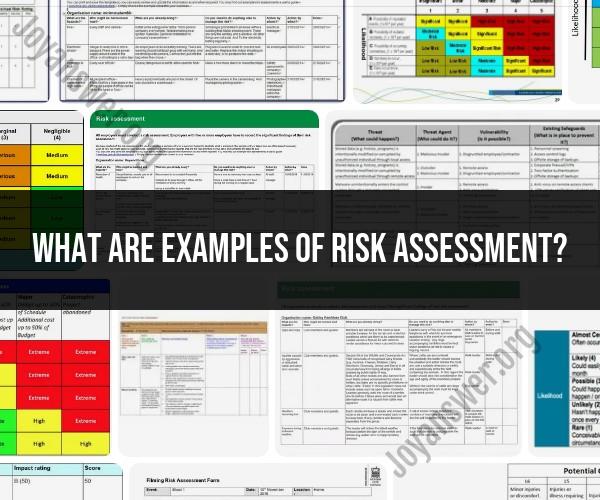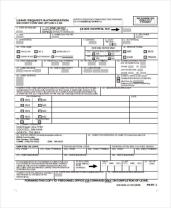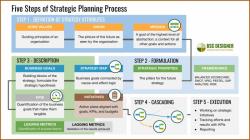What are examples of risk assessment?
Risk assessments are conducted in various fields and contexts to identify potential hazards, evaluate their impact, and implement measures to mitigate or manage those risks. Here are real-life examples of risk assessments in both business and health sectors:
Business Sector:
Financial Risk Assessment:
- Example: A financial institution, such as a bank or investment firm, conducts a risk assessment to evaluate its exposure to financial risks like market risk, credit risk, and liquidity risk. The assessment considers factors such as economic conditions, investment portfolios, and creditworthiness of clients.
- Purpose: To ensure the financial stability and resilience of the institution in various market scenarios.
Supply Chain Risk Assessment:
- Example: A manufacturing company assesses risks within its supply chain, including disruptions in the availability of raw materials, transportation delays, or geopolitical instability affecting suppliers.
- Purpose: To identify vulnerabilities and implement strategies like dual sourcing or inventory buffers to minimize supply chain disruptions.
Operational Risk Assessment:
- Example: An airline conducts an operational risk assessment to evaluate potential hazards in flight operations, maintenance, and ground services. This may include assessing the risk of pilot error, equipment failures, or adverse weather conditions.
- Purpose: To enhance safety measures and operational efficiency.
Market Entry Risk Assessment:
- Example: A company planning to expand into a new international market assesses risks related to political stability, regulatory compliance, cultural differences, and market competition.
- Purpose: To make informed decisions about market entry strategies and risk mitigation measures.
Cybersecurity Risk Assessment:
- Example: A technology company conducts a risk assessment to identify vulnerabilities in its IT systems, potential data breaches, and the impact of cyberattacks.
- Purpose: To develop and implement cybersecurity measures to protect sensitive data and maintain business continuity.
Health Sector:
Patient Safety Risk Assessment:
- Example: A hospital conducts a risk assessment to identify potential hazards that could compromise patient safety, such as medication errors, surgical complications, or infections.
- Purpose: To implement protocols and best practices to reduce the risk of harm to patients.
Public Health Risk Assessment (Pandemic Preparedness):
- Example: In response to a global pandemic like COVID-19, public health agencies conduct risk assessments to evaluate the spread of the virus, its impact on healthcare systems, and potential interventions.
- Purpose: To inform public health policies, vaccination strategies, and containment measures.
Environmental Health Risk Assessment:
- Example: A government agency assesses the health risks associated with exposure to environmental pollutants, such as air pollution, contaminated water sources, or hazardous waste sites.
- Purpose: To protect public health by regulating or mitigating exposure to environmental hazards.
Drug Safety Risk Assessment:
- Example: Pharmaceutical companies and regulatory agencies conduct risk assessments to evaluate the safety of new drugs, considering potential side effects, interactions, and long-term effects.
- Purpose: To ensure that medications are safe and effective for patients.
Occupational Health and Safety Risk Assessment:
- Example: A construction company conducts risk assessments to identify potential workplace hazards, such as falls, electrical hazards, or exposure to hazardous materials.
- Purpose: To protect the health and safety of employees and comply with occupational health and safety regulations.
These examples demonstrate the diverse applications of risk assessments in various sectors. The goal is to proactively identify and manage risks to minimize negative impacts on business operations, public health, safety, and overall well-being.












